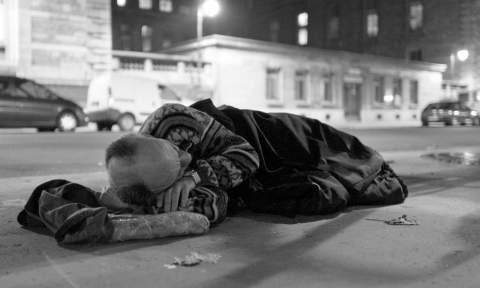Update Terbaru BLUE.. Pada Article Hari Ini Penulis Akan Memberi Anda Cerita Yang Amat Menarik Hari Ini . Jadi Mari Kita Mula Membaca.
Brilliant and compassionate. Homeless people get a free home and a social worker to help them become self-sufficient. Even if they fail to become self-sufficient, they keep the apartment. Utah. Who would have thought.
Earlier this month, Hawaii State representative Tom Bower (D) began walking the streets of his Waikiki district with a sledgehammer, and smashing shopping carts used by homeless people. “Disgusted” by the city’s chronic homelessness problem, Bower decided to take matters into his own hands — literally. He also took to rousing homeless people if he saw them sleeping at bus stops during the day.

Bower’s tactics were over the top, and so unpopular that he quickly declared “Mission accomplished,” and retired his sledgehammer. But Bower’s frustration with his city’s homelessness problem is just an extreme example of the frustration that has led cities to pass measures that effective deal with the homeless by criminalizing homelessness.
- City council members in Columbia, South Carolina, concerned that the city was becoming a “magnet for homeless people,” passed an ordinance giving the homeless the option to either relocate or get arrested. The council later rescinded the ordinance, after backlash from police officers, city workers, and advocates.
- Last year, Tampa, Florida — which had the most homeless people for a mid-sized city — passed an ordinance allowing police officers to arrest anyone they saw sleeping in public, or “storing personal property in public.” The city followed up with a ban on panhandling downtown, and other locations around the city.
- Philadelphia took a somewhat different approach, with a law banning the feeding of homeless people on city parkland. Religious groups objected to the ban, and announced that they would not obey it.
- Raleigh, North Carolina took the step of asking religious groups to stop their longstanding practice of feeding the homeless in a downtown park on weekends. Religious leaders announced that they would risk arrest rather than stop.
This trend makes Utah’s accomplishment even more noteworthy. In eight years, Utah has quietly reduced homelessness by 78 percent, and is on track to end homelessness by 2015.
How did Utah accomplish this? Simple. Utah solved homelessness by giving people homes. In 2005, Utah figured out that the annual cost of E.R. visits and jail says for homeless people was about $16,670 per person, compared to $11,000 to provide each homeless person with an apartment and a social worker. So, the state began giving away apartments, with no strings attached. Each participant in Utah’s Housing First program also gets a caseworker to help them become self-sufficient, but the keep the apartment even if they fail. The program has been so successful that other states are hoping to achieve similar results with programs modeled on Utah’s.
It sounds like Utah borrowed a page from Homes Not Handcuffs, the 2009 report by The National Law Center on Homelessness & Poverty and The National Coalition for the Homeless. Using a 2004 survey and anecdotal evidence from activists, the report concluded that permanent housing for the homeless is cheaper than criminalization. Housing is not only more human, it’s economical.
This happened in a Republican state! Republicans in Congress would probably have required the homeless to take a drug test before getting an apartment, denied apartments to homeless people with criminal records, and evicted those who failed to become self-sufficient after five years or so. But Utah’s results show that even conservative states can solve problems like homelessness with decidedly progressive solutions.
Bagaimana Menarikkan Article Pada Hari Ini . BLUE.Jangan Lupa Datang Lagi Untuk Membaca Article Yang lebih Menarik Pada Masa Akan Datang/







Posting Komentar